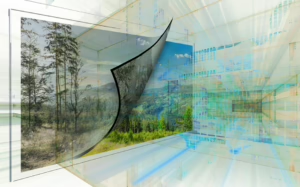Applied Materials has introduced the Max OLED solution, a new manufacturing technology designed to enable OLED displays on larger glass panels for tablets, PCs, and TVs. This solution includes a patented OLED pixel architecture and a manufacturing process that deposits and encapsulates pixels without using masks. The technology scales OLED manufacturing from Gen 6 glass substrates to Gen 8 and beyond, allowing for more efficient production of larger displays.
The Max OLED solution enhances display brightness by up to three times, increases resolution by up to 2.5 times to approximately 2,000 pixels per square inch, and reduces display power consumption by more than 30 percent. The manufacturing approach also extends display lifespans by up to five times. The integrated system combines glass handling, OLED deposition steps, and encapsulation in a high-vacuum environment to protect OLED materials from air and moisture, which are key challenges in OLED manufacturing.
Applied Materials has secured repeat orders for the Max OLED solution from multiple display manufacturers, including Samsung Display, which is evaluating an alpha system. The technology is designed to double the efficiency of OLED material usage compared to previous methods and reduces the environmental impact of manufacturing by eliminating the need for certain chemicals and minimizing material waste. It leverages proven technologies from large-area LCD production, applying these to OLED displays for larger devices.
| Summary | Details |
| Scalability | Supports Gen 6 to Gen 8 substrates and beyond, enabling larger OLED displays for tablets, PCs, and TVs. |
| Display Brightness | Increases brightness by up to 3 times compared to previous technologies. |
| Resolution | Improves resolution by up to 2.5 times, achieving approximately 2,000 pixels per square inch. |
| Power Consumption | Reduces power consumption by more than 30 percent. |
| Display Longevity | Extends display lifespan by up to 5 times. |
| Material Efficiency | Doubles OLED material usage efficiency through selective deposition. |
| Manufacturing Integration | Combines glass handling, OLED deposition, and encapsulation in a high-vacuum system. |
| Environmental Impact | Reduces reliance on materials and chemicals, lowering waste and energy usage. |
| Proven Technology | Applies technologies from large-area LCD production to OLED manufacturing. |
| Industry Adoption | Repeat orders from manufacturers, with Samsung Display testing an alpha system. |

